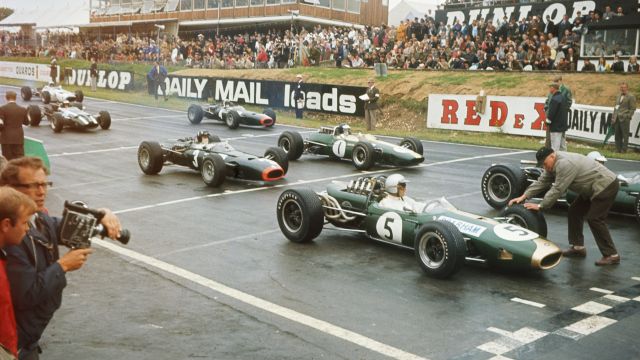The Evolution Of F1 Cars: From 1950 To 2023


In this article, we will look at the evolution of Formula 1 cars. The top level of motorsports is Formula 1 or simply F1. It’s one of the rare sports that transcends its niche audience, F1 has attracted a global following since its earlier days. And now it is the fastest and most technologically advanced series in the world. F1 has indeed been around for nearly 70 years, but in those years the sport has unbelievably changed.
The History of Formula 1
Although many innovative motorsports have come and gone, F1 has endured. Established in 1950, it is one of the oldest racing series and the most popular and lucrative type of car racing. Even more pivotal to the development of F1 were the other races conducted in the 1930s. After World War II, the series moved to specially built race tracks where in the 1930s, racing was still done on public highways. Spectators needed to be shielded from the car’s high speeds and the show needed to improve without endangering the drivers.
The Birth of F1: 1950-1959
In 1950, Silverstone England played host to the inaugural Formula 1 race, which also took place on London’s public streets. That same year, the British Grand Prix hosted the inaugural F1 World Championship race, which has continued annually since then.
During F1’s formative years, British teams and drivers dominated the sport. F1 vehicles from this era also stood out in comparison to those of today. The cars of the era were also open-wheeled but the engines were in front of the driver, the tyres were much thinner than the standard now, and the careful science of aerodynamics has not been properly applied.
1960-1969: Big Changes
F1 changed dramatically from its first decade into the second, and the 1960s were the conclusion of an era of motorsports. In the 60s, there was an alarming increase in F1 fatalities. In the first decade, only two drivers were killed. However, more than 30 drivers lost their lives in the second decade. Because of this the priorities shifted in 1968 and the safety of the drivers came to the frontlines.
The design of the tyres was still grooved but became a bit wider and at the end of the decade, the aerodynamics entered the equation.
1970-1979: A Decade of Change
In this decade, F1 began to expand beyond its European roots and became a truly international sport. Even while Britain remained the sport’s epicentre and the site of most events, several other countries started participating. F1 cars with turbochargers were introduced during this decade, ushering toward cleaner, more fuel-efficient engines that have persisted to the present day. And if you are presently looking for online casino nz dollars then you can check the link for the list of trusted sources.
1980-1989: Further Innovations
F1 vehicles became more aerodynamic and powerful thanks to the invention of carbon fiber chassis in this decade. There was an increase in the usage of sophisticated data systems and the development of electronic traction and launch control systems.
It was the start of the shift from drivers and teams to the fans, so in 1985, the first on-board camera was used for broadcasting.This was the era when the sport saw a shift towards being commercialised.
1990-1999: Enter the New Millennium
This was the time the sport indeed became global and not so Europe-centric as it used to be. Corporate sponsorships became the norm and many brand advertisements started popping up on the cars.
Many advancements in technology and safeguards were introduced: semi-automatic transmissions first utilised by the Ferrari team, electronic traction control and groove tyres, just to name a few of major innovations.
2000-onwards: The Current State of the Arts
F1 had an even more dramatic shift than in the 90s. In this decade the series introduced a new type of cars, expanded the types of teams that may participate and modified its presentation style. The current Formula 1 logo was updated; it has not been redesigned since the 80s. Safety became a priority once more. 2009 marked the debut of the kinetic energy recovery systems, marking the beginning of the hybrid era in F1. 2014 was marked as a year for the hybrid switch. Tyres have become wider than ever before. Carbon brake discs became standard in 2020; they can withstand great temperatures and have 5G of stopping force.
Conclusion
So much has happened and changed over the years, including the tyres’ shape, engine placement, fuel type, and many more. Other parts were added like cameras and computers, which became essential parts of the cars and the advent of computerised timing and scoring systems helped with the precision. Nothing ever remains as it is; things evolve, and Formula 1 also evolves with time. It has become the behemoth of a sport we know and love today.





